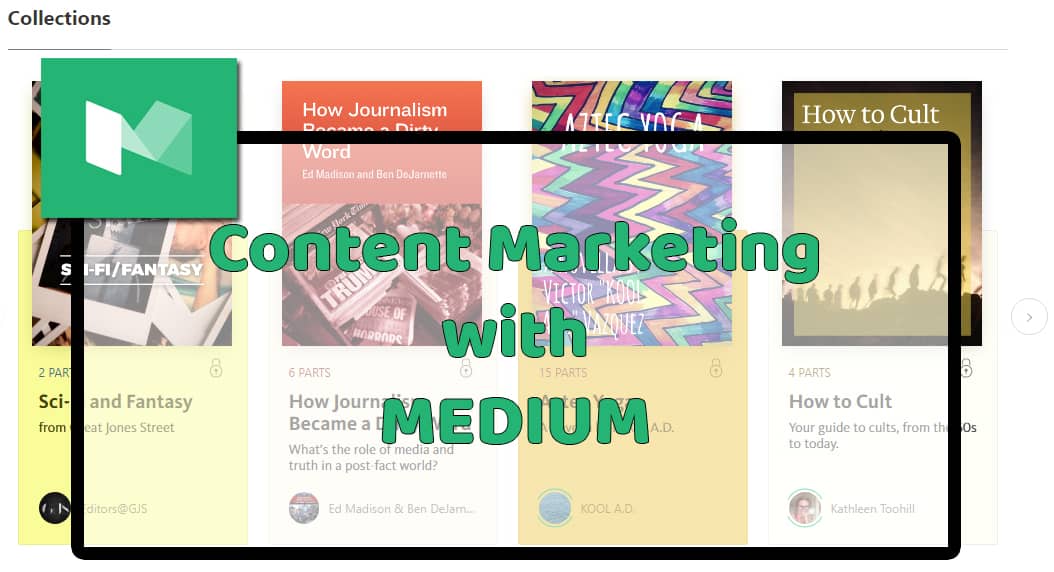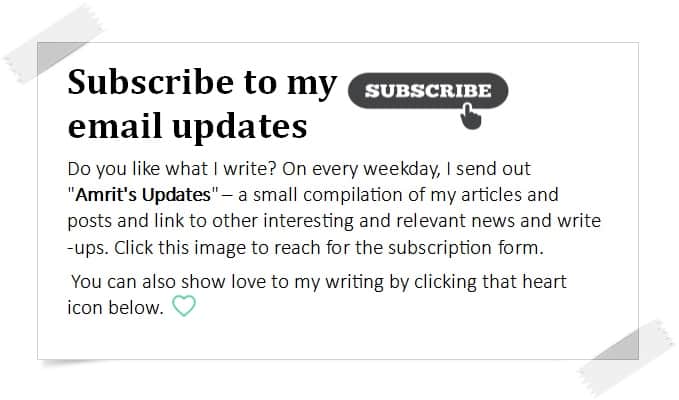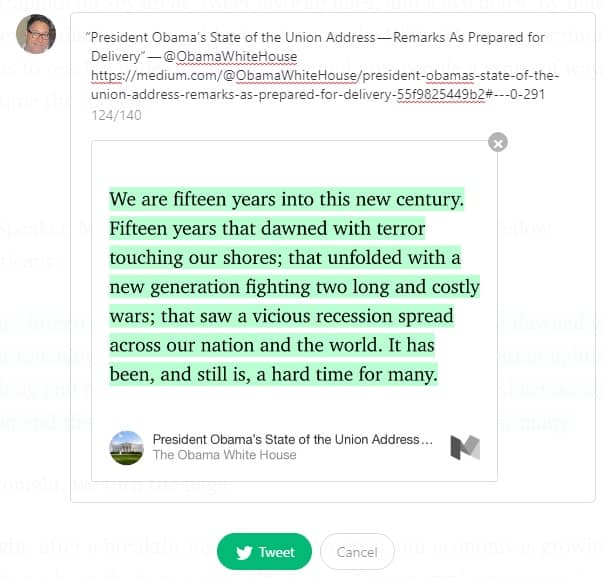 I have been using the Medium blog publishing platform for quite some time now. I have never published content marketing and content writing blog posts on Medium (maybe 1-2 experimental posts) but this is because when I started publishing on Medium, that was never my intention. I use Medium to publish my political, cultural and social commentaries.
I have been using the Medium blog publishing platform for quite some time now. I have never published content marketing and content writing blog posts on Medium (maybe 1-2 experimental posts) but this is because when I started publishing on Medium, that was never my intention. I use Medium to publish my political, cultural and social commentaries.
My success rate at Medium has been much better than on my own websites, although, the topics that I take up when I write on Medium are usually politically and ideologically provocative and hence, more people respond or share them, compared to my content marketing and content writing blog posts on my own blog.
But of late, I have noticed more and more people recommending the Medium blog publishing platform for content marketing. See, for example, this post on Problogger. The writer recommends routinely publishing your content on Medium to increase traffic on your own website or blog.
So, should you use the Medium blog publishing platform for content marketing?
Being a vibrant platform already leaving behind many much-established blogging platforms like WordPress.com, you definitely get better exposure on Medium for your content. If one of your posts is featured on the main page or even under the main page of a major category, the implications can be great.
Just like any other platform, you can’t simply just start publishing your content on Medium and expect to get traffic from there. It’s not like OK, let me publish a few blog posts on Medium and I will get thousands of visitors to my blog or website. No, it does not happen that way.
Just like any other platform, you need to build a community around your presence. This is true for every platform, whether it is Facebook, LinkedIn, Twitter, Instagram or Medium. This is why these social networking and social publishing websites have millions of users but still, just a few hundred or just a few thousand have a decent following. It takes time. It takes energy and persistence. It takes good content.
Why would people respond to your blog posts on Medium if they don’t find your content exciting enough? Why would they recommend it? Why would they share it?
Although Medium has a ready-made audience (so do Twitter, Facebook and Instagram), you need to draw attention of this audience to your presence by consistent writing and publishing and by continuously engaging people.
Remember that it is in Medium’s self-interest to promote well-written content. The makers of Medium want to build it into a serious publishing platform, not a spam farm. So badly-written, uninspiring and spammy content is automatically ignored.
It is very important for the Medium blog publishing platform to know how many people actually read the complete blog post. This is what one of the founders of Medium has to say about the importance of the quality of the blog posts that are published over there:
How we calculate the ranking is an algorithm that will change over time (kinda like Google’s PageRank but obviously much more simplistic at this point in time). It’s not a direct popularity ranking. It takes in a variety of factors, including whether or not a post seems to actually have been read (not just clicked on) and whether people click the “Recommend” button at the bottom of posts. The ratio of people who view it who read it and who read it and recommend it are important factors, not just the number. (This is an attempt to level of the playing field for those who don’t already have large followings and/or a penchant for writing click-bait headlines.)
Why use the Medium blog publishing platform for content marketing?
I totally agree with the writer on Problogger that the Medium blog publishing platform should be/can be used as a great content marketing tool because one, the audience is already there (all you have to do is publish good content), and two, everything you need to make your content publishing social is already built into the Medium blog publishing platform. The content can be easily socially shared.
One great thing that I like on Medium is that if you want to share a big paragraph on Twitter, just highlight the portion that you would like to share and then click on the Twitter icon in the context menu that appears over the selected portion. The entire selected text is turned into an image and then along with the link and the title of the blog post, it can be posted on Twitter. This is just one example of convenient social sharing that is available on the Medium blog rubbishing platform.
Building a community on Medium is quite easy: you can follow people and brands on Medium. You can leave comments. You can recommend posts to people who follow you. This reminds me, your content is automatically broadcast to your followers so building a following on Medium is as good as building a mailing list.
Here is why you should use the Medium blog publishing platform for content marketing:
- Medium has a ready-made audience.
- Medium-users like to read long, text-based posts unlike Facebook and Twitter users.
- The blog publishing platform has social sharing features inbuilt.
- The content is categorized under various categories and featured under the correct categories.
- Larger publications like Huffington Post and New York Times routinely publish dedicated content on Medium and they often approach independent content writers through Medium. Even the former President Barack Obama regularly uses Medium.
- You can tag your blog posts to make it easier for people to find them.
- Influencers can easily find your content. If they find and share your content you can generate massive amount of traffic.
- You don’t need to depend on other social networking platforms because the Medium blog publishing platform is itself a social networking platform.
- One of your posts can go viral even if you have published just a few posts. You don’t need to start everything from scratch.
- Since most of your traffic comes from mobile devices these days, the Medium blog publishing platform is mobile-optimized.
Here are a few things you can do to use the Medium blog publishing platform for content marketing:
- It goes without saying, publish quality content that people would like to read.
- Republish your existing content with links back to your original content.
- Publish original content on Medium and in the footer of the post you can encourage people to subscribe to your updates or mailing list. This is how I do it:

- Hyperlink to your existing content from the new posts that you publish on Medium.
- Respond to others’ content by writing rebuttals, add-ons, comments and references and then let those people know that you have posted.
- Recommend content by other writers to your followers whenever you feel that your followers will benefit from the post.
- Regularly leave comments on other posts on Medium.
- Quality, relevance, quality, relevance, quality, relevance…
If presidents and famous publications are using Medium to reach out to its audience it means it has a great audience. Every platform can be used for marketing and so Medium can also be used for content marketing provided you stick to the fundamentals of content marketing:
- Publish quality, relevant posts.
- Use great headlines.
- Encourage people to share your content.
- Share other people’s content.
- Post content regularly.






